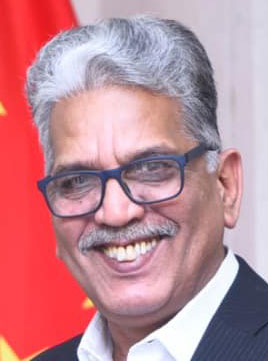Water resources in Pakistan are depleting rapidly, an acute water shortage in the country has reached an alarming level which might totally run dry Pakistan by 2025. Pakistan is approaching the scarcity threshold for water due to poor water management and a lack of political will & seriousness to deal with the crisis that is posing a severe threat to the country’s existence, stability, sustainability and security. Water is a finite commodity and its consumption management is gaining supreme significance across the world.
The impending water crisis in Pakistan is deepening day by day as two-third of water resources are being wasted by following poor conservation methods and outdated agricultural practices.
The construction of dams in Pakistan which is politicized per a nefarious design is imperative as after 1947 only two dams have been constructed so far in the country, whereas Turkey and India have constructed 65 and 24 dams respectively during the same period. A cogent water conservation strategy is the need of the hour. The current per capita water availability in Pakistan is only 1000 cubic meters while it was 6,600 cubic meters at the time of creation of Pakistan, which place it among water-scarce countries of the world. Till 1960, Pakistan was water abundant with almost 6000 cubic meters per capita.
Ironically, due to climate change Pakistan every year is facing heavy floods causing huge loss to lives and properties though off-channel water reservoirs could be set up to preserve flood water to prevent damages of flood and to utilize the saved ground water later on but no authority or department in Pakistan is working on this issue to avert the scarcity of water. A comprehensive water conservation and management strategy in view of catering water requirements of the population of the country is the burning issue and water crisis could be overcome through the construction of small and flood dams at different sites.
Pakistan is an agrarian country. Agriculture constitutes the largest sector of economy.95% of the country’s water is used for agriculture with the largest contiguous irrigation systems in the world. The water resources in Pakistan are below scarcity level of 1000 m3/ person which is worsening due to climate change and transboundary issues. Major investment required for modern irrigation of drip and sprinkle technique with expanded hydromet system to manage urban water infrastructure and water wastage & to meet its agriculture needs. Pakistan is a water stressed country due to ineffective water management, inadequate storage, and uneven distribution, lack of awareness and irrigation management. Pakistan due to its inefficient storage capacity can only store 10% of average annual flow of its rivers. A water efficient agriculture system required the relationship of land and water management.
Pakistan is also facing shortage of water due to the water politics across the border with India. Under the Indus Water Treaty of 1960 between Pakistan and India, Pakistan had to give up its control over three eastern tributaries of the Indus River which became a root cause of a severe water crisis in the country. Pakistan now receives only 80 MAF rather than the 117 MAF of the total inflow of water in the Indus River System before the treaty. Interprovincial disputes are also aggravating the situation of water deficit in Pakistan often leveraged by so called ethno nationalist movements to arouse controversies and passions to justify heinous and camouflaged designs of separatist agenda which are seriously hampering the construction of new dams in the country. The interprovincial water rivalry could not even be resolved by the passage of 18th Amendment which guarantees more provincial autonomy yet it has distracted the underlying causes of water disputes hence damaging the purpose of the water management issue in the country.
Water is a vital natural resource and its integrated management is essential for sustainable development. Improving water governance is an extremely important precondition for effective water conservation, especially in the contexts where water scarcity is rampant and leads to low human development indicators. Water Resource Management is the greatest challenge of the 21st century for Pakistan due to its increasing demand of water at an annual rate of 10 percent according to a United Nations (UN) report. Engagement in water sector development and improving access to water may improve wellbeing of the people as well as promote peace and harmony in the country. Pakistan needs to formulate missing policies and improve existing regulations. A viable national policy and strategy required to enhance water productivity through infrastructure development and adoption of improved technology. Above all a strong national, patriotic political will is required to skip an extinction level of water resources in Pakistan both on government and public level through policies and legislation to address the serious crisis as the current situation is untenable.
Sign in
Welcome! Log into your account
Forgot your password? Get help
Password recovery
Recover your password
A password will be e-mailed to you.







